61.3 percent of the population 15 years old and over were part of the labor force
In 2023, the labor force participation rate (LFPR) in the Province of Eastern Samar was recorded at 61.3 percent. This translates to 214 thousand persons who were either employed or unemployed out of the 348 thousand estimated population 15 years old and over in the province. This is 0.2 percentage point higher than the LFPR in 2022.
The Province’s LFPR is lower than the 64.9 percent and 63.9 percent LFPR of the Philippines and Region VIII, respectively in 2023 (Table 1).
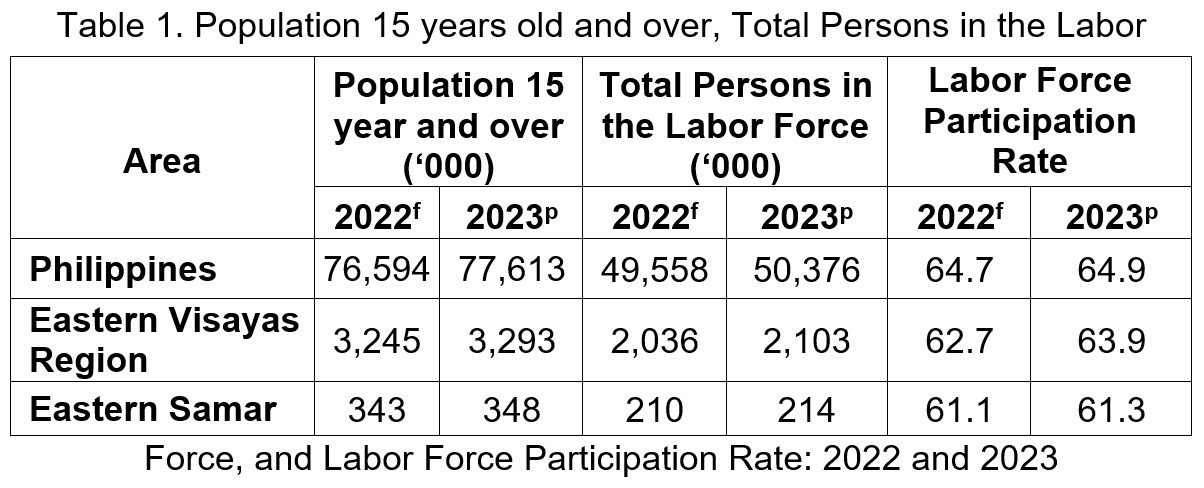
Employment rate in Eastern Samar registered at 96.4 percent
The Province of Eastern Samar registered a 96.4 percent employment rate in 2023, higher than the 95.5 percent employment rate in 2022 by 0.8 percentage point. This corresponds to 206 thousand persons 15 years old and over who had a job or business in 2023. (Table 2 and Figure 1)
The Province’s employment rate is higher than the 96.2 percent and
95.7 percent employment rate of Eastern Visayas Region and Philippines, respectively in 2023. (Table 2 and Figure 1)
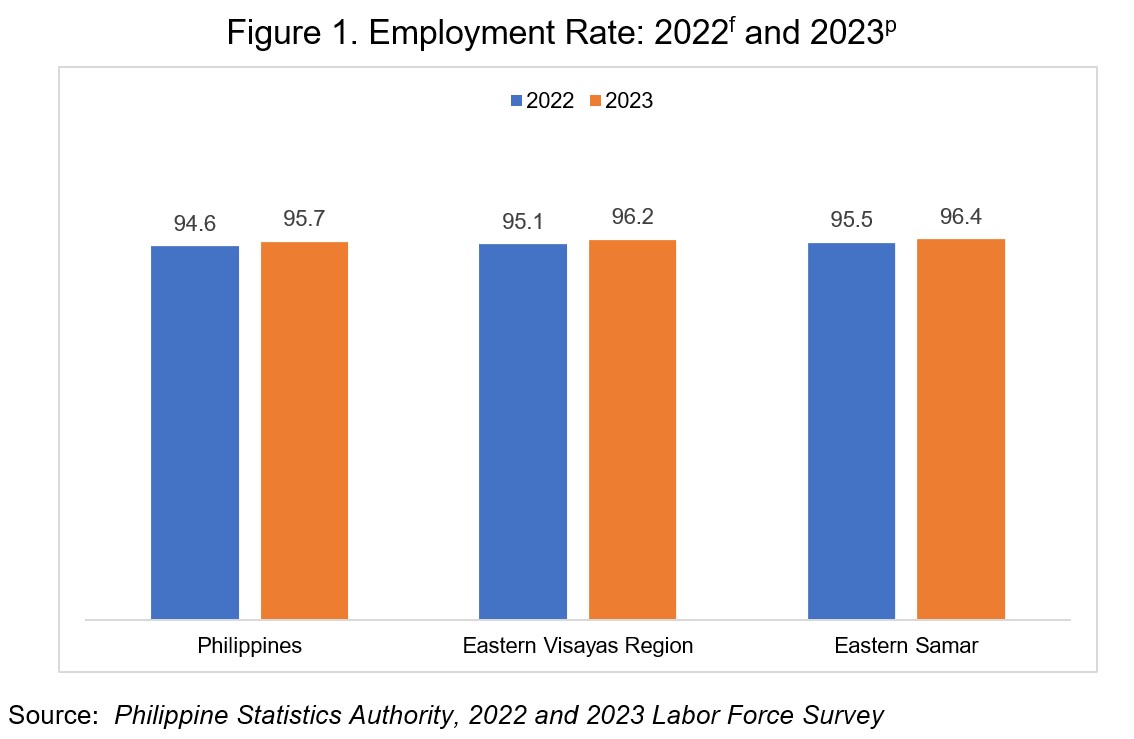
36 in every 1000 persons 15 years and over are unemployed
The unemployment rate in Eastern Samar was recorded at 3.6 percent or 36 in every 1000 persons 15 years and over are unemployed in 2023. This corresponds to a total of eight thousand unemployed persons out of the 214 thousand persons in Eastern Samar’s labor force. (Table 2 and Figure 2)
The Province’s unemployment rate is lower compared to the 3.8 percent and 4.3 percent unemployment rate of Eastern Visayas region and Philippines, respectively in 2023. (Table 2 and Figure 2)
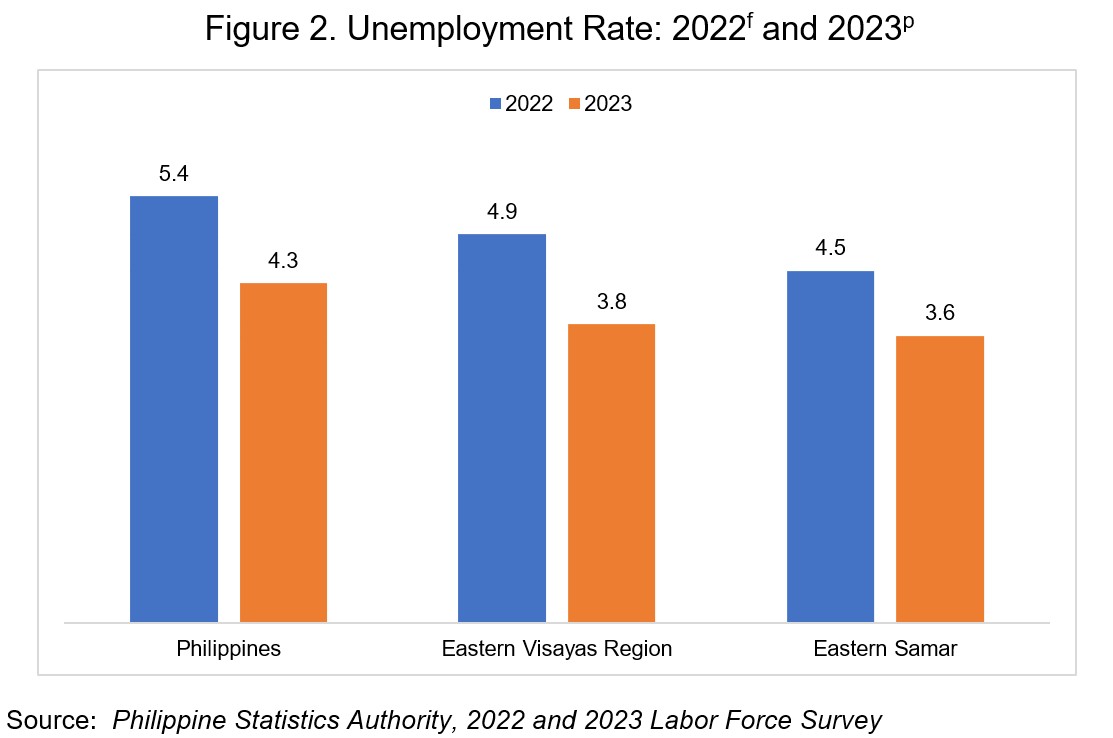
Underemployment rate in Eastern Samar increased to 17.4 percent
Underemployed persons refer to employed persons who express the desire to have additional hours of work in their present job, or an additional job, or a new job with longer working hours.
The underemployment rate in Eastern Samar increased to 17.4 percent in 2023 from 15.2 percent in 2022. This translates to a total of 36 thousand underemployed persons out of the 206 thousand employed persons in the province. (Table 2 and Figure 3)
The Province’s unemployment rate is higher than the 17.3 percent and
12.3 percent unemployment rate of Eastern Visayas region and Philippines, respectively in 2023. (Table 2 and Figure 3)
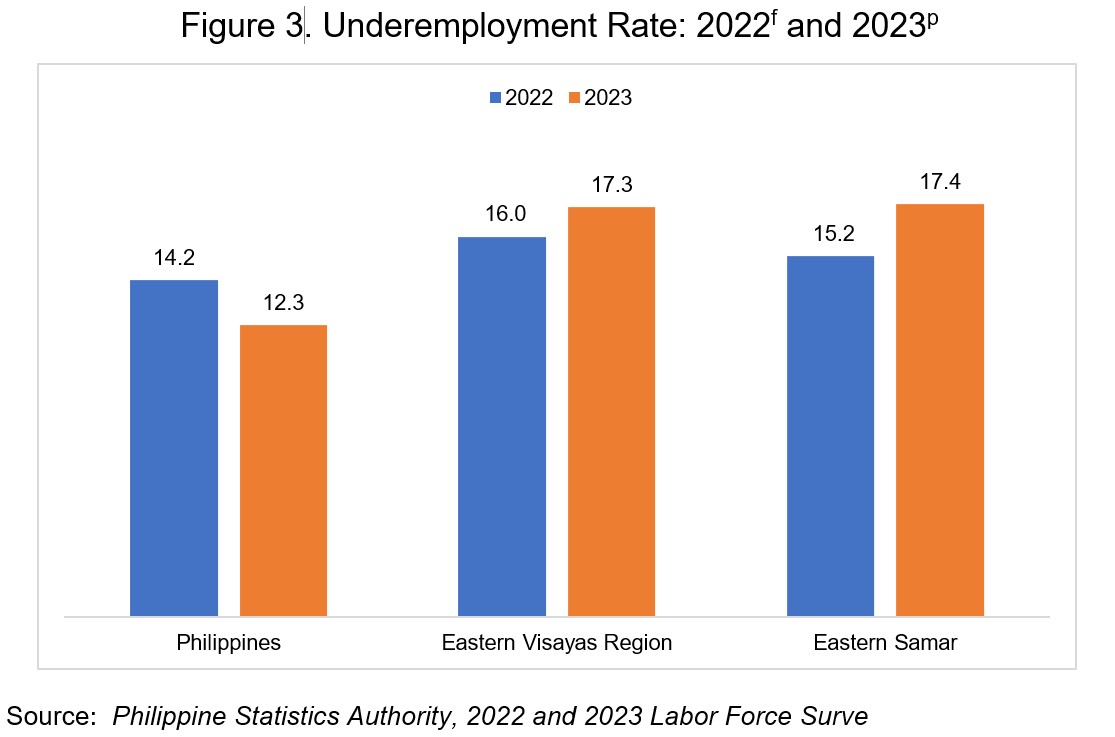
Table 2. Population 15 years old and over, Total Persons in the Labor Force, Labor Force Participation Rate, Total Number of Employed Persons, Employment Rate, Total Number of Unemployed Persons, Unemployment Rate, Total Number of Underemployed Persons and Underemployment Rate: 2022f and 2023p
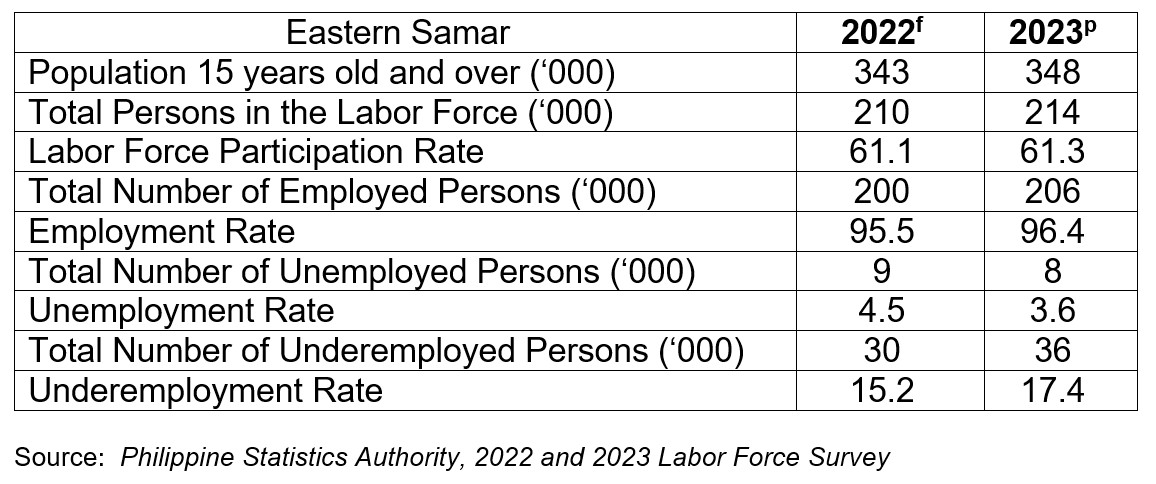
TECHNICAL NOTES
The Annual Labor Force Survey (LFS) refers to the average of data collected across all survey rounds throughout the year. It produces labor and employment statistics for the full year, providing a more comprehensive analysis of the Philippine labor market, including the regional, provincial, and highly urbanized city (HUC) levels.
Labor Force Survey – a nationwide survey of households conducted by Philippine Statistics Authority (PSA) to gather data on the demographic and socio-economic characteristics of the population.
Population 15 Years Old and Over – the number of population 15 years old and over excluding overseas workers. Overseas workers are excluded in the estimation of the size of working population (population aged 15 years and over) since the data on their economic characteristics are not collected because they are not considered part of the labor force in the country.
In the Labor Force or Economically Active Population – persons 15 years old and over who are either employed or unemployed in accordance with the definitions described below.
Employed - persons 15 years old and over who during the reference period are reported either:
a. At work, i.e., those who do any work even for one hour during the reference period for pay or profit, or work without pay on the farm or business enterprise operated by a member of the same household related by blood, marriage, or adoption; or
b. With a job but not at work, i.e., those who have a job or business but are not at work because of temporary illness or injury, vacation, or other reasons. Likewise, persons who expect to report for work or to start operation of a farm or business within two weeks from the date of the enumerator’s visit are considered employed.
Underemployed – employed persons who express the desire to have additional hours of work in their present job, or an additional job, or a new job with longer working hours. Visibly underemployed persons are those who work for less than 40 hours during the reference period and want additional hours of work.
Unemployed – Starting April 2005, the new unemployment definition was adopted per NSCB Resolution Number 15 dated October 20, 2004. As indicated in the said resolution:
Unemployed persons include all those who, during the reference period, are 15 years old and over as of their last birthday, and reported as persons:
a.) Without work, i.e., had no job or business during the reference period; and
b.) Currently available for work, i.e., were available and willing to take up work in paid employment or self-employment during the reference period, and/or would be available and willing to take up work in paid employment or self-employment within two weeks after the interview date; and
c.) Seeking work, i.e., had taken specific steps to look for a job or establish a business during the reference period; or
d.) Not seeking work due to the following reasons: (1) tired or believed no work available, i.e., discouraged workers; (2) awaiting results of previous job application; (3) temporary illness or disability; (4) bad weather; and/or (5) waiting for rehire or job recall.
Persons Not in the Labor Force – persons 15 years old and over who are neither employed nor unemployed according to the definitions mentioned. Those not in the labor force are persons who are not looking for work because of reasons such as housekeeping, schooling, and permanent disability. Examples are housewives, students, persons with disability, or retired persons.
Approved for Release:
FOR THE CHIEF STATISTICAL SPECIALIST
SUZANNE B. AMOSCO
Supervising Statistical Specialist
Officer-in-Charge

